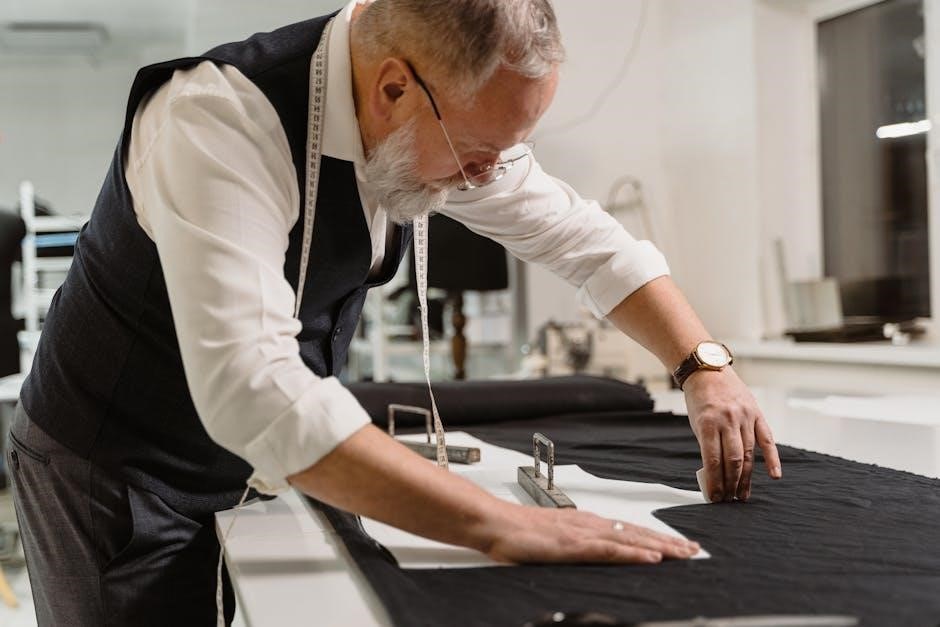Personal Grooming
A well-groomed appearance enhances confidence and professionalism. Start with a consistent skincare routine, including cleansing, moisturizing, and sun protection. Keep hair tidy with regular trims and styling. Maintain clean nails, practice good hygiene, and use subtle fragrances. Pay attention to shaving techniques and wardrobe fit.
Skincare Routine
A consistent skincare routine is essential for maintaining healthy and rejuvenated skin. Start with cleansing to remove dirt, oil, and impurities using a gentle face wash suitable for your skin type. Follow up with a toner to balance your skin’s pH and tighten pores. Moisturizing is a cornerstone—choose a product that hydrates and protects your skin from environmental stressors. For specific concerns like dark circles or puffiness, incorporate an eye cream into your regimen.
Exfoliation is key but should be done in moderation—1-2 times a week—to avoid irritation. Use a mild exfoliator containing ingredients like alpha-hydroxy acids (AHAs) or beta-hydroxy acids (BHAs) to remove dead skin cells and reveal a brighter complexion. Sunscreen is non-negotiable, even on cloudy days, to shield your skin from harmful UV rays. Opt for a broad-spectrum SPF 30 or higher and reapply every two hours if spending time outdoors.
Finally, consider incorporating serums or treatments tailored to your skin concerns, such as acne, aging, or hyperpigmentation. Consistency is crucial, so establish a morning and nighttime routine to keep your skin healthy and looking its best.
Hair Care Tips
Maintaining healthy and stylish hair is a key part of personal grooming. Start by washing your hair with a shampoo suited to your hair type—whether it’s oily, dry, or somewhere in between. Use warm water to open up the hair cuticles and rinse thoroughly to remove all product residue. Avoid over-washing, as it can strip your hair of its natural oils, leading to dryness and damage.
Conditioning is essential for keeping your hair soft and manageable. Apply conditioner from mid-length to the ends, avoiding the scalp, and leave it on for a few minutes before rinsing. For added nourishment, incorporate a deep conditioning treatment once a week.
When drying, avoid rubbing your hair with a towel, as this can cause breakage. Instead, gently pat it dry or let it air-dry. For styling, use a comb or brush with wide teeth to minimize tangles and prevent damage. Regular trims are also important to keep your hair looking neat and prevent split ends.
Lastly, protect your hair from heat tools by using a heat protectant spray, and limit your use of styling products to avoid buildup. A well-cared-for hairstyle can elevate your entire appearance and boost confidence.

Fitness and Exercise
Regular physical activity is crucial for maintaining strength, endurance, and overall health. Incorporate a mix of strength training, cardio, and flexibility exercises into your routine. Aim for at least 30 minutes of moderate exercise most days of the week. Consistency is key for long-term benefits.
Effective Workout Routines
A well-structured workout routine is essential for achieving fitness goals. Start with compound exercises like squats, deadlifts, and bench presses to build strength and muscle mass. Incorporate cardio exercises such as running, cycling, or swimming for heart health and endurance.
Aim for 3-4 strength training sessions per week, targeting different muscle groups each day. Include core exercises like planks and sit-ups to improve stability and posture. Balance your routine with flexibility workouts, such as yoga or stretching, to prevent injuries and enhance mobility.
Progressive overload is key—gradually increase weights or reps to challenge muscles and promote growth. Rest days are equally important, allowing muscles to recover and grow stronger. Consistency and variety are crucial for avoiding plateaus and maintaining motivation.
Tailor your routine to your lifestyle and preferences, ensuring it fits within your schedule and keeps you engaged. Combine these elements for a balanced and effective workout plan that supports overall health and wellness.
Nutrition and Diet Planning
A balanced diet is the cornerstone of a healthy lifestyle for men. Focus on consuming a variety of nutrient-rich foods, including lean proteins like chicken, fish, and legumes, as well as whole grains, fruits, and vegetables. These provide essential vitamins, minerals, and energy for daily activities.
Incorporate healthy fats, such as those found in avocados, nuts, and olive oil, to support heart health and satisfy hunger. Aim to limit processed foods, sugary drinks, and excessive red meat to maintain optimal health.
Portion control and meal timing are crucial for weight management and digestion. Consider meal prepping to ensure consistency and reduce the temptation of unhealthy choices. Staying hydrated by drinking plenty of water throughout the day is also vital for overall well-being.
Tailor your diet to your lifestyle and goals, whether it’s for muscle gain, weight loss, or general health. Consulting with a nutritionist can help create a personalized plan that suits your needs. A well-planned diet not only improves physical health but also enhances mental clarity and energy levels.
By prioritizing quality over quantity and adopting sustainable eating habits, you can maintain a balanced and nutritious diet that supports long-term health and vitality.

Style and Fashion
A polished wardrobe reflects personal style and confidence. Invest in timeless pieces like tailored suits, classic shirts, and versatile denim. Ensure clothes fit well and coordinate colors to create cohesive outfits; Accessorize thoughtfully with watches, belts, and quality footwear to elevate your look.
Wardrobe Essentials
Building a solid wardrobe starts with timeless, versatile pieces that can be mixed and matched for various occasions. A well-tailored suit is a cornerstone, offering sophistication for formal events. Classic white and light-blue dress shirts are must-haves, pairing effortlessly with suits or on their own.
Versatile denim jeans are a casual staple, while chinos and trousers provide polished alternatives. A navy blazer adds a touch of elegance to any outfit. Essential footwear includes leather dress shoes, comfortable loafers, and durable boots for versatility.
Accessorize thoughtfully with a quality leather belt, minimalist watch, and simple cufflinks. Layering options like crew-neck sweaters and cardigans add depth to outfits. Invest in high-quality, well-fitting pieces that align with your personal style and lifestyle.
- A tailored suit for formal occasions
- Classic dress shirts in neutral tones
- Versatile denim and trousers
- Quality footwear for every setting
- Accessorize to elevate your look
Focus on fit, quality, and versatility to create a wardrobe that exudes confidence and sophistication.
Accessorizing for Different Occasions
Accessorizing is a powerful way to elevate your outfit and tailor your look to the occasion. For formal events, a leather belt, minimalist watch, and simple cufflinks create a polished appearance. A slim tie or bow tie can add personality to a suit.
Casual settings call for relaxed yet stylish choices, such as a canvas belt, sneakers, and a casual hat or sunglasses. Layering with a scarf or statement bracelet adds flair without overcomplicating the look.
For business professional environments, opt for subtle accessories like a quality watch and simple tie bar. Avoid over-accessorizing to maintain a professional demeanor.
- Formal: Watch, cufflinks, tie, or bow tie
- Casual: Hat, sunglasses, bracelet, or scarf
- Professional: Minimalist watch, tie bar
Balance is key; ensure accessories complement your outfit without overwhelming it. Thoughtful accessorizing enhances your personal style and makes a lasting impression.

Etiquette and Social Skills
Good etiquette begins with basic manners: say “please,” “thank you,” and “excuse me.” Show respect in interactions, practice active listening, and maintain eye contact. Be punctual, avoid interrupting others, and dress appropriately for occasions to demonstrate professionalism and consideration.
Basic Manners and Courtesies
Mastering basic manners is essential for making a positive impression. Start with polite greetings, such as saying “hello” or “good morning,” and always address others with respect. Use phrases like “please” and “thank you” consistently. Practice good table etiquette: keep elbows off the table, chew with your mouth closed, and avoid interrupting conversations. Respect personal space and avoid intrusive behavior. When interacting with others, maintain eye contact and listen actively. Show appreciation for kindness and services received. Open doors for others, especially in formal or professional settings. Avoid rude gestures or language, and always apologize if you unintentionally offend someone. These small courtesies demonstrate maturity and consideration, fostering goodwill in both personal and professional relationships.
Networking and Professional Interactions
Effective networking and professional interactions are vital for building relationships and advancing your career. Start by being approachable, smiling, and maintaining open body language. Practice active listening by engaging in conversations attentively and responding thoughtfully. Always be prepared with a concise elevator pitch that highlights your skills and interests. When meeting someone new, extend a firm handshake, make eye contact, and introduce yourself clearly. Follow up with new contacts by sending a polite email or connecting on professional platforms like LinkedIn.
Confidence is key, but avoid coming across as arrogant. Show genuine interest in others’ work and experiences. Use professional tools like business cards or digital profiles to share your contact information. Dress appropriately for events, ensuring your attire aligns with the occasion. Remember to thank hosts or organizers for opportunities to connect. Finally, maintain a positive attitude and focus on mutually beneficial relationships. These practices will help you navigate professional interactions with ease and build a strong network.

Relationships and Communication
Building strong relationships requires trust, respect, and open communication. Practice active listening, express empathy, and clarify expectations to avoid misunderstandings. Be honest and transparent in your interactions, whether personal or professional. Conflict resolution skills, like staying calm and seeking solutions, strengthen bonds. Consistent effort and emotional intelligence foster deeper connections and mutual understanding.
Building Strong Relationships
Building strong relationships is a cornerstone of personal and professional success. It begins with trust, respect, and open communication. Actively listen to others, showing empathy and understanding, while expressing your thoughts clearly. Consistency in your actions and words fosters reliability and deepens connections. Emotional intelligence plays a key role in navigating conflicts and understanding others’ perspectives. Small gestures, like showing appreciation and support, can significantly strengthen bonds. Be patient and adaptable, as relationships evolve over time. Cultivate shared interests and hobbies to create common ground. Effective communication involves both speaking and listening, ensuring mutual understanding. Avoid assumptions and clarify expectations to prevent misunderstandings. Celebrate milestones and offer encouragement to demonstrate your investment in the relationship. Respecting boundaries and maintaining individuality within a partnership is equally important. Lastly, practice forgiveness and learn from conflicts to grow together. By combining effort, empathy, and commitment, you can build resilient and meaningful relationships that stand the test of time.
Effective Communication Techniques
Effective communication is the backbone of successful interactions, both personally and professionally. It begins with clarity and conciseness, ensuring your message is easily understood. Practice active listening by fully engaging with the speaker, showing empathy, and asking clarifying questions. Use “I” statements to express feelings without sounding accusatory. Adapt your communication style to suit the audience, whether formal or casual. Be mindful of nonverbal cues, such as body language and tone, as they convey emotions and intentions. Avoid interrupting and allow others to fully express themselves before responding. Regularly seek feedback to refine your communication skills. Conflict resolution can be improved by staying calm, focusing on solutions, and seeking common ground. Clear communication fosters trust, collaboration, and mutual understanding. By mastering these techniques, you can navigate conversations more effectively, build stronger connections, and achieve your goals.
Career and Personal Development
Advance in your career by setting clear goals and pursuing lifelong learning. Network strategically, seek mentorship, and stay updated on industry trends. Balance personal growth with professional success by continuously refining skills and adapting to new opportunities.
Advancing in Your Career
Advancing in your career requires a strategic approach. Start by setting clear, measurable goals aligned with your professional aspirations. Continuously develop your skills through certifications, workshops, and online courses to stay competitive. Networking is crucial; build relationships with industry leaders and seek mentorship to gain insights and opportunities. Demonstrating initiative and taking on leadership roles within your organization can highlight your capabilities. Stay adaptable to industry trends and technological advancements, ensuring your expertise remains relevant. Additionally, effective communication and problem-solving skills are essential for career growth. Regularly seek feedback from supervisors and peers to identify areas for improvement. By combining dedication, resilience, and a proactive mindset, you can climb the career ladder successfully and achieve long-term professional fulfillment. Remember, consistent effort and a commitment to learning are key to sustaining upward momentum in your career journey.
Continuous Learning and Skill Development
Continuous learning and skill development are essential for personal and professional growth. Start by identifying areas where you can improve or expand your expertise. Set specific, achievable learning goals and create a structured plan to accomplish them. Utilize online resources such as courses, tutorials, and workshops to acquire new skills. Stay updated with industry trends by reading articles, attending webinars, and following thought leaders. Practicing active learning techniques, like hands-on projects or collaborative exercises, can reinforce your understanding. Networking with professionals in your field provides opportunities for mentorship and knowledge exchange; Additionally, embrace feedback as a tool for improvement and reflect on your progress regularly; By prioritizing lifelong learning, you adapt to changing demands and stay competitive in both personal and professional environments. Remember, skill development is a continuous journey that fosters growth and opens doors to new opportunities.

No Responses